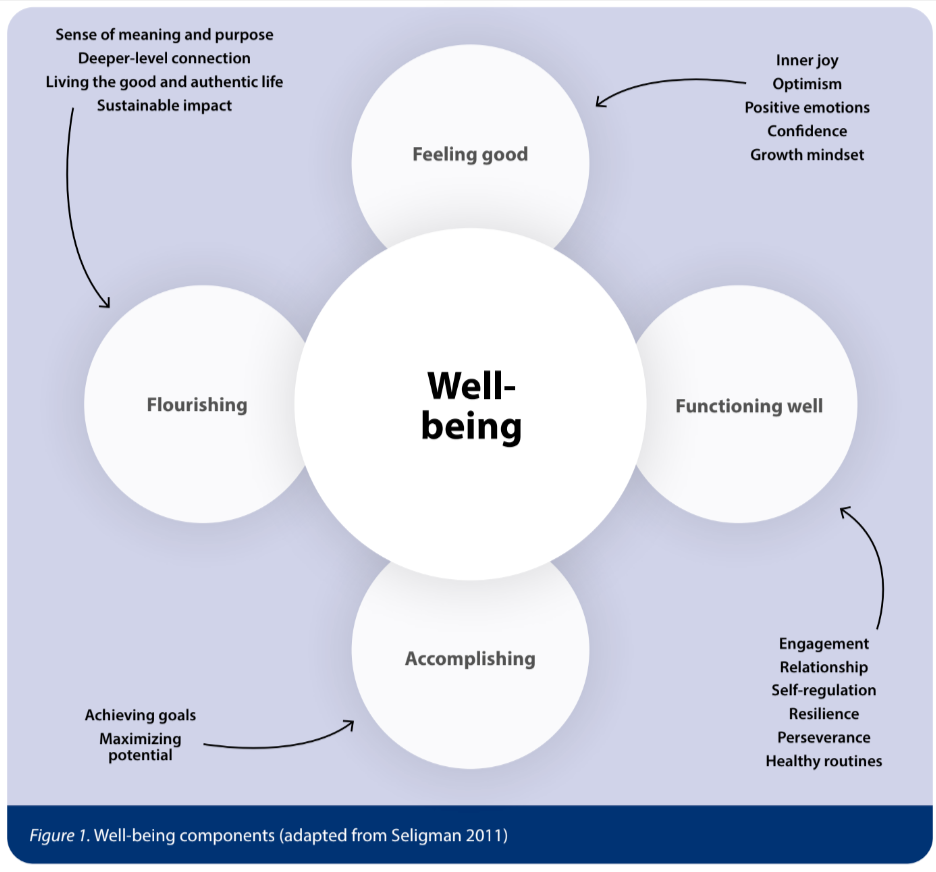
Well-Being in Schools: Understanding Student Well-Being
A focus on subjective well-being and school life satisfaction is practical, measurable, and comprehensive and gives schools an opportunity to make a difference in the lives of young people.
– International Baccalaureate Organization

INTRO
The International Baccalaureate (IB) suggests that a well-being policy is one of the most effective means for improving students’ attainment outcomes. The current paper is meant to support IB teachers and school leaders in better understanding and integrating well-being into the architecture of their school policy and practice as part of successful implementation of IB programs.
This paper is the first policy research paper in a series on student well-being in IB World Schools. Before you begin building an approach to well-being in your own school, it’s important to understand well-being in a school context. In this resource, well-being is defined based on an influential conceptual model, and common myths related to well-being for students and schools are dispelled.
OBJECTIVES
- Understand what well-being actually means (PERMA Model)
- Distinguish between common myths and facts about well-being
WHAT DOES WELL-BEING ACTUALLY MEAN?
PERMA MODEL
- Positive emotions—feeling good
- Engagement—being completely absorbed in activities
- Relationships—being authentically connected to others
- Meaning—purposeful existence
- Achievement—a sense of accomplishment and success
According to the psychological approach, well-being is a subjective reality that is influenced by a specific set of individual characteristics. Research has shown that individual characteristics play an important role in the way that students self-report their well-being.
Among the most important individual characteristics that will influence student well-being are:
- social and demographic characteristics (family background, gender, age, socio-economic status)
- personality traits
- socio-emotional skills
- academic abilities
- health
Research has shown that a great number of individual characteristics can be developed and improved through education and appropriate stimulation. In the past few years, new empirical research and data suggest that personality traits and socioemotional skills development programs embedded in education have a catalytic effect on increasing academic achievement, health, behavior and prospects in life, including overall well-being of students (Durlak et al. 2011).

DISPELLING COMMON MYTHS ABOUT STUDENT WELL-BEING
MYTH 1: Student well-being is all about feeling good and being happy at school
Some believe that any program or intervention that helps students feel happy is effective. This is based on a cultural belief that students need to enjoy a carefree childhood while they learn new things. Others may be more cautious of initiatives that solely pursue the goal of “feeling good.” For them, education may be understood as a constant effort to acquire knowledge and skills, and feeling good is preferably a secondary benefit.
THE FACTS: So far, research doesn’t fully support either stance mentioned above, but rather a balance between the two.
The comprehensive definition of well-being comprises much more than feelings of inner joy. Positive emotions are desirable and essential in the equation, but to achieve wellbeing, students need to function well, be healthy, and have a sense of engagement and accomplishment through practice, sustained effort, and perseverance. Well-being is a more complex and stable state, whereas happiness is a temporary response to stimuli.
MYTH 2: Student well-being is a fixed innate state
Research has shown that well-being may evolve over time and contexts. Dynamic interactions of students with others, various contexts, and events in a student’s personal life history may radically change their six states of well-being.
THE FACTS: Well-being is neither permanent nor innate
Many studies have shown that students’ well-being encompasses a set of skills that can be intentionally and explicitly cultivated and developed through education and with appropriate support. Well-being skills are usually covered by interventions addressing the development of socio-emotional skills, resilience, a growth mindset and metacognitive abilities.
More recently, studies in neuroscience have emphasized and highlighted the plasticity of the brain, treating well-being as a skill that can be trained through practice. According to neuroscientists, there are four fundamental constituents of well-being (Dahl et al. 2020).
- Emotional resilience: The rapidity with which a person recovers from adversity is a skill that requires practice.
- Positive outlook: The ability to see the good side in people and events; neuroscience research has shown that even a modest amount of meditation practice can have an important impact on improving a positive emotional outlook.
- Attention/being focused/being present: When we’re focused in the present moment, we tend to be less judgmental and more creative in finding solutions to challenges.
- Generosity: Research shows that engaging in kindness reliably activates brain circuits that support well-being.
MYTH 3: Student well-being cannot be measured
In the past few years, empirical research has developed diverse and complex ways to capture scientific measures of student well-being. Well-being measurement is complex, but not necessarily impossible. The variety and complexity of the measurement tools are usually consistent with the way we define well-being. The specific approach to student wellbeing in your school shapes the tools that you use to measure it.
THE FACTS: There are several examples of measurement tools recognized by research
An overview of the most common student well-being measurements across the world has shown that student well-being surveys are:
- consistent with a pre-existing well-being definition or agreed-upon framework
- age-appropriate—there are different survey questions for different education levels (primary, secondary, post-secondary)
- built with a longitudinal perspective (data is collected regularly)
- complemented with other well-being surveys (teachers, principals and school surveys)
In general, in the education systems where student well-being is consistently measured, schools have access to various dashboards to analyze their results and to take actions. Multiple types of resources are also available to support teachers and schools to monitor and improve well-being.











Responses